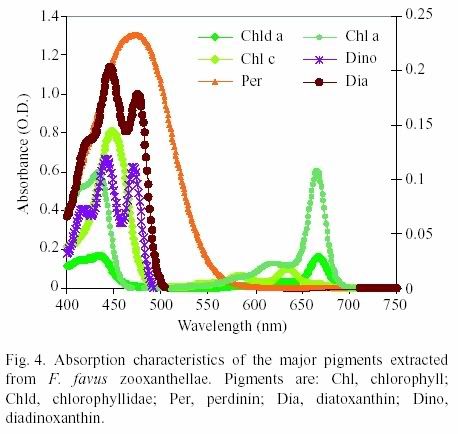Advanced Aquarist's Online Magazine - Feature Article: Coral Coloration and Incident Light: A Photographic Essay
This is excellent. Not sure if it was what I was looking for as I don't have time to reread the whole article. I think this one leans towards 20k bulbs showing the best growth.
Very good article. I don't think there is ANY doubt that for ideal viewing and coloration 20k bulbs have been the ideal choice:
Nevertheless, two focused conclusions are supported by these data: (1) the colors of these specific corals viewed under 20K lighting appear more vibrant compared to either 10K or T5 lighting. In addition, the coral colors appear quite similar under these latter two lighting schemes. The former observation could be due to the inability of the human eye and/or the color correction procedure to completely eliminate the dominant effect of the blue light in the 20K bulb's spectrum. (2) In some cases, the growth light does induce, uniquely, the production of specific coral coloration molecules. Whereas the first conclusion has been recognized for as long as 20K bulbs have been available, the experiments described herein suggest, for the first time, that the specific coloration molecules that define these vibrant colors are actually present in the coral even if it is grown out under lower Kelvin-rated lighting.
That said , take a look at the bulbs I have shown graphs of above. The LED bulbs are NOT 20k bulbs but more of a 10k bulb. Why is everyone comparing 10k LED bulbs to 20K MH bulbs when it comes to spectral INTENSITY. This is not a fair comparison. If you compare a 10k LED bulb to both the Spectral Plots and Spectral Intensity you see the LED is lacking in many aspects.
As far as coral flourescence, here are the proteins responsible and their corresponding wavelengths
Excitation wavelength / Emission wavelength -- protein name
Blue Fluorescent Proteins
383 / 445 -- EBFP
399 / 511 -- Sapphire
399 / 511 -- T-Sapphire
Cyan Fluorescent Proteins
439 / 476 -- ECFP
433 / 475 -- mCFP
433 / 475 -- Cerulean
435 / 477 -- CyPet
458 / 489 -- AmCyan1
472 / 495 -- Midori-Ishi Cyan
462 / 492 -- mTFP1 (Teal)
Green Fluorescent Proteins
484 / 507 -- EGFP
480 / 505 -- AcGFP
482 / 502 -- TurboGFP
487 / 509 -- Emerald
492 / 505 -- Azami Green
493 / 505 -- ZsGreen
Yellow Fluorescent Proteins
514 / 527 -- EYFP
514 / 527 -- Topaz
515 / 528 -- Venus
516 / 529 -- mCitrine
517 / 530 -- YPet
525 / 537 -- PhiYFP
529 / 539 -- ZsYellow1
540 / 553 -- mBanana
Orange and Red Fluorescent Proteins
548 / 559 -- Kusabira Orange
548 / 562 -- mOrange
554 / 581 -- dTomato
554 / 581 -- dTomato-Tandem
558 / 583 -- DsRed
563 / 582 -- DsRed2
555 / 584 -- DsRed-Express (T1)
556 / 586 -- DsRed-Monomer
568 / 585 -- mTangerine
574 / 596 -- mStrawberry
576 / 592 -- AsRed2
584 / 607 -- mRFP1
584 / 610 -- JRed
587 / 610 -- mCherry
588 / 618 -- HcRed1
598 / 625 -- mRaspberry
590 / 637 -- HcRed-Tandem
590 / 649 -- mPlum
595 / 655 -- AQ143
You can still see where LED's are lacking in the fluorescence wavelengths for corals regardless of whatever kelvin they are rated. This can easily be overcome by using additional T5, halide bulbs or spotlight bulbs in combination with the LED's to highlight spectral peaks that the LED's are missing. But if you want an all in one package, I would still wait for the LED's to be produced that highlight those wavelenghts to get optimal growth and coloration from SPS corals.






